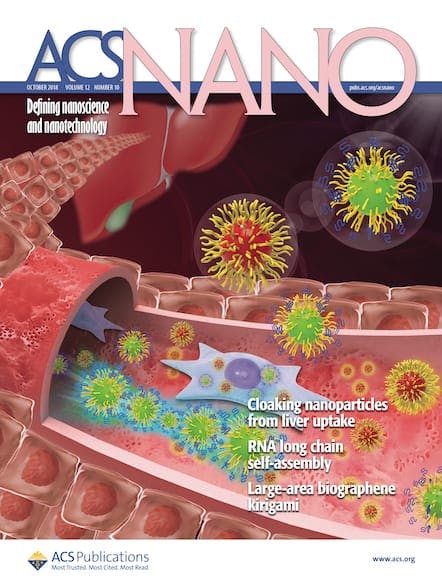Editors-in-chief of ACS journals do more than review manuscripts. They also articulate the vision for their journals and comment on changes and emerging best practices in their respective fields. A major way they do this is through editorials: short, opinion-based pieces written by a journal’s editor-in-chief or editorial staff. Each journal approaches editorials in a […]

Each journal approaches editorials in a slightly different way. We caught up a few ACS managing editors and the Deputy Editor of one of ACS’s most interactive journals to learn what editorials mean to their publications.
ACS Nano
One of ACS Nano’s most popular editorials was written in December 2012. Titled “We Take It Personally,” the article was signed by the entire editorial staff and emphasized the journal’s commitment to open communication and thorough peer review.
Journal of Chemical Education
The title of longest-running editorial section belongs to the Journal of Chemical Education. They have published a monthly editorial since the journal’s inception in 1924—adding up to more than 1,000 editorials since that first “Editors’ Outlook.” Inaugural editor Neil E. Gordon explained his goals for the new journal including, “To keep the teacher and student in closer touch with current opportunity furnished by the American Chemical Society and other scientific organizations and institutions.” That promise continues to this day. In an editorial published in May of 2015, current JCE Editor-in-Chief Norbert J. Pienta cited the “community of effort” that Gordon advocated at the journal’s inception.
In recent years, JCE has also begun publishing guest editorials. Says Jon Holmes, Managing Editor of JCE, “The purpose of our editorials is to educate readers on various topics in chemistry education, from the policies of the government agencies to the character of our students. Our goal is to motivate our community to discourse, action, and change.”
Chemistry of Materials
For Chemistry of Materials, the role of editorials has evolved over time. As Managing Editor Carlos Toro explains, “Editorials have always been part of the history of Chemistry of Materials. In the past, editorials were used sporadically to reach out to the journal’s readership on special occasions. Since January 2014, editorials have been published in every issue on a variety of topics that the editorial team considers of significance to the materials community.”
One topic they’ve chosen to highlight: previously published papers that have been cited 1,000 times or more. The “1K Club,” as the editorials are called, is a series of interviews with the authors of seminal papers. Authors share the inspiration for their research and give advice to young chemists.
The Journal of Physical Chemistry Letters
“Very few journals publish editorials on a regular basis,” Kamat says. “However, we find them effective in strengthening ties with our readers.”
Why editorials matter
All managing editors mentioned the popularity of hands-on, “how-to” type articles they have published. Many of the most-read articles across these journals are part of the “Mastering the Art of Scientific Publication” virtual issue, published jointly by ACS Nano, The Journal of Physical Chemistry, and Chemistry of Materials. Topics include everything from an explanation of corresponding authorship to the art of writing a paper title. Editors see the popularity of these articles as evidence that this practical, useful advice is a need that editorials can help fulfill.
The world of scientific publication is changing. Research can be published and disseminated more quickly than ever, and the Internet and social media mean that anyone with a computer can be a commentator on the field. Even in this environment, it’s clear journals still see editorials’ value for sharing practical wisdom and creating a rallying point for the community. If these journals are any indication, editorials won’t be going away anytime soon.
